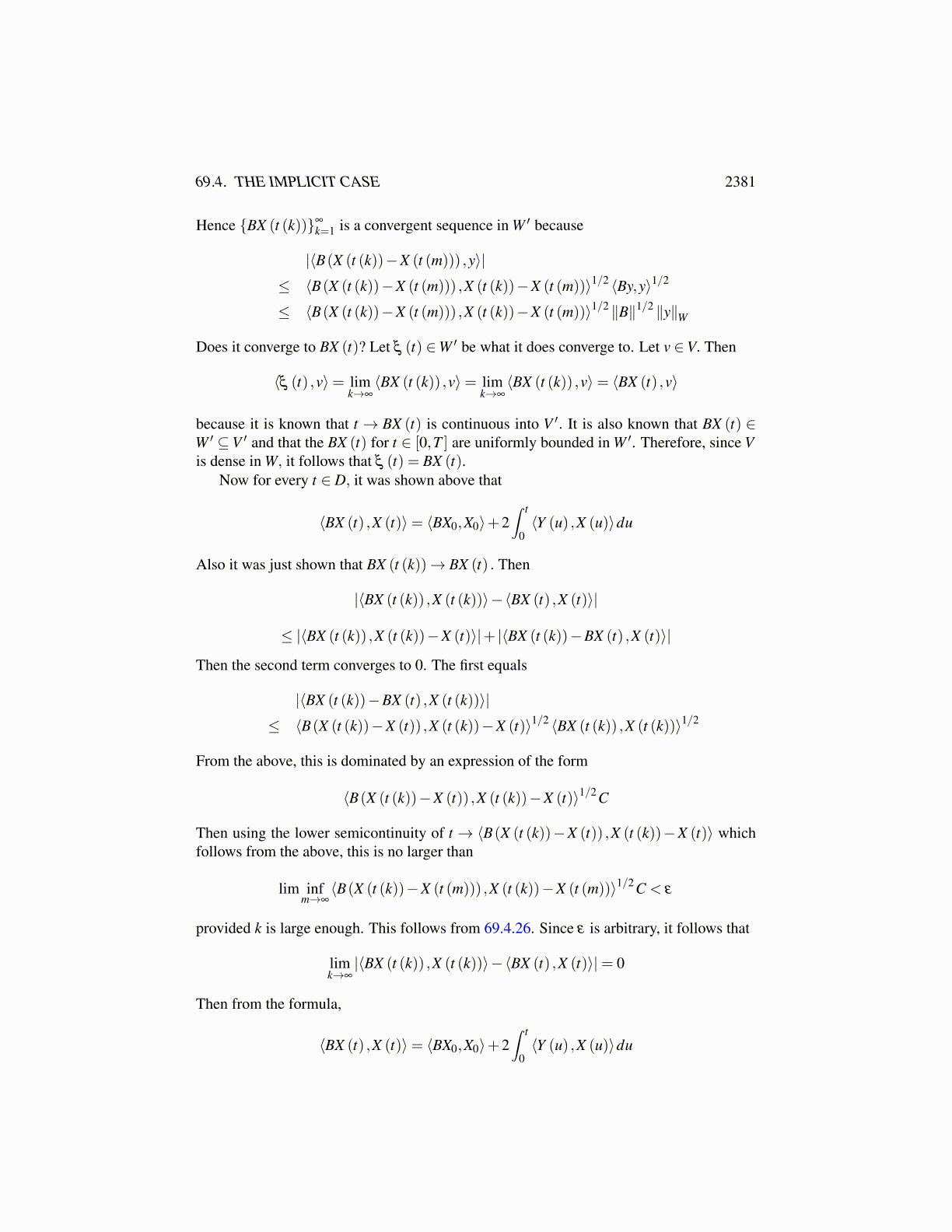
69.4. THE IMPLICIT CASE 2381
From Lemma 69.4.1 above, there exists {ei} ⊆V such that⟨Bei,e j
⟩= δ i j and
⟨BX (t) ,X (t)⟩=∞
∑k=1|⟨BX (t) ,ei⟩|2 = sup
m
m
∑k=1|⟨BX (t) ,ei⟩|2
Since each ei ∈V, and since t→ BX (t) is continuous into V ′ thanks to the formula 69.4.23,it follows that t→ ∑
mk=1 |⟨BX (t) ,ei⟩| is continuous and so t→ ⟨BX (t) ,X (t)⟩ is the sup of
continuous functions. Therefore, this function of t is lower semicontinuous. Since D isdense in [0,T ] , it follows that for all t,
⟨BX (t) ,X (t)⟩ ≤C (∥Y∥K′ ,∥X∥K)
It only remains to verify the claim about weak continuity.Consider now the claim that t→ BX (t) is weakly continuous. Letting v ∈V,
limt→s⟨BX (t) ,v⟩= ⟨BX (s) ,v⟩= ⟨BX (s) ,v⟩ (69.4.25)
The limit follows from the formula 69.4.23 which implies t→ BX (t) is continuous into V ′.Now
∥BX (t)∥= sup∥v∥≤1
|⟨BX (t) ,v⟩| ≤ ⟨Bv,v⟩1/2 ⟨BX (t) ,X (t)⟩1/2
which was shown to be bounded for t ∈ [0,T ]. Now let w ∈W . Then
|⟨BX (t) ,w⟩−⟨BX (s) ,w⟩| ≤ |⟨BX (t)−BX (s) ,w− v⟩|+ |⟨BX (t)−BX (s) ,v⟩|
Then the first term is less than ε if v is close enough to w and the second converges to 0 so69.4.25 holds for all v ∈W and so this shows the weak continuity.
Now pick t ∈ D, the union of all the mesh points. Then for all k large enough, t ∈Pk.Say t = tm. From Lemma 69.4.3,
−m−1
∑j=0
⟨B(X(t j+1
)−X (t j)
),(X(t j+1
)−X (t j)
)⟩=
⟨BX (tm) ,X (tm)⟩−⟨BX0,X0⟩−2m−1
∑j=0
∫ t j+1
t j
⟨Y (u) ,X rk (u)⟩du
Thus, ⟨BX (tm) ,X (tm)⟩ is constant for all k large enough and the integral term converges to∫ tm
0⟨Y (u) ,X (u)⟩du
It follows that the term on the left does converge to something as k→ ∞. It just remains toconsider what it does converge to. However, from the equation solved by X ,
BX(t j+1
)−BX (t j) =
∫ t j+1
t j
Y (u)du